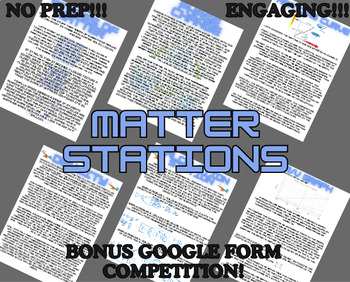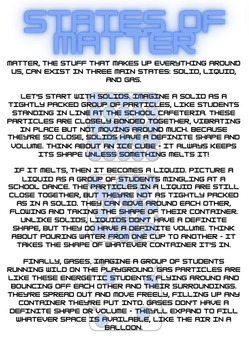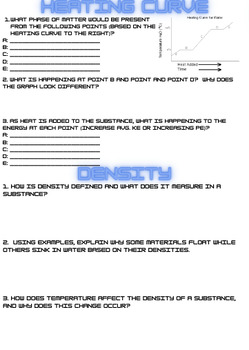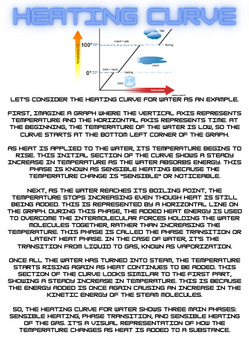Matter Matters: Exploring States, Changes, and Density - Stations Activity
- PDF
Description
Title: "Matter Matters: Exploring States, Changes, and Density - Stations Activity"
Description:
Engage your students in an interactive and comprehensive review of key concepts related to states of matter, phase changes, heating curves, density, and mass/volume graphs with this engaging "Matter Matters" Stations Activity! This resource is designed to reinforce student understanding of these fundamental topics through hands-on exploration, critical thinking, and problem-solving.
**Station 1: States of Matter**
Students will delve into the characteristics of solids, liquids, and gases, examining how particle arrangement and movement differ in each state. Non-scientific analogies are provided to help students understand and connect with the material. Questions may include identifying examples of each state, describing particle behavior, and explaining how temperature affects state transitions.
**Station 2: Phase Changes at the Molecular Level**
At this station, students will explore phase changes such as melting, freezing, vaporization, and condensation from a molecular perspective. Questions may prompt students to describe the energy changes involved in each phase transition and predict the behavior of particles during phase changes.
**Station 3: Heating Curve Analysis**
Students will analyze a heating curve graph, focusing on the transitions between states of matter and the kinetic and potential energy of particles at various points. Questions may ask students to interpret temperature changes, identify phase transitions, and describe the relationship between energy and particle movement.
**Station 4: Exploring Density**
At this station, students will investigate the concept of density and its significance in determining the physical properties of materials. Questions may involve calculating the density of various objects, comparing densities of different substances, and explaining why certain materials float or sink in water.
**Station 5: Calculation station**
Students will use the formula to calculate density (D=m/v) and understand how to solve for either density, mass, or volume based on the given information. Students will have several examples and use those examples to help them mathematically solve for different variables.
**Station 6: Mass/Volume Graphs**
Students will analyze mass/volume graphs to compare the densities of different substances and objects. Questions may require students to interpret the slope of the graph, calculate density from given data points, and relate density to mass and volume measurements.
**Bonus Google Form Competition: "Unlock the Mystery"**
As a fun and engaging extension activity, students can participate in a Google Form competition where they must complete additional tasks related to the concepts covered in the stations. Upon successful completion, students will receive a password that "unlocks" the Google Form. The first to submit is the winner!
This "Matter Matters" Stations Activity provides a dynamic and interactive review experience that reinforces student understanding of essential concepts in chemistry. With engaging stations, thought-provoking questions, and a bonus competition, students will be motivated to deepen their knowledge and skills in the fascinating world of matter!





